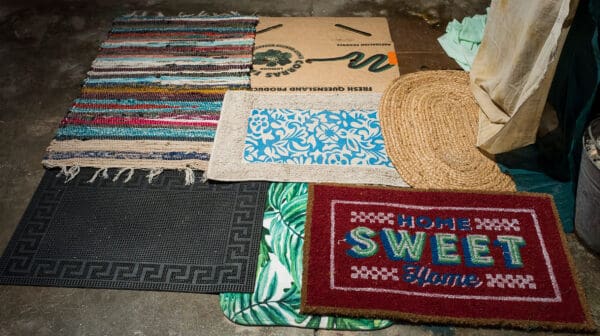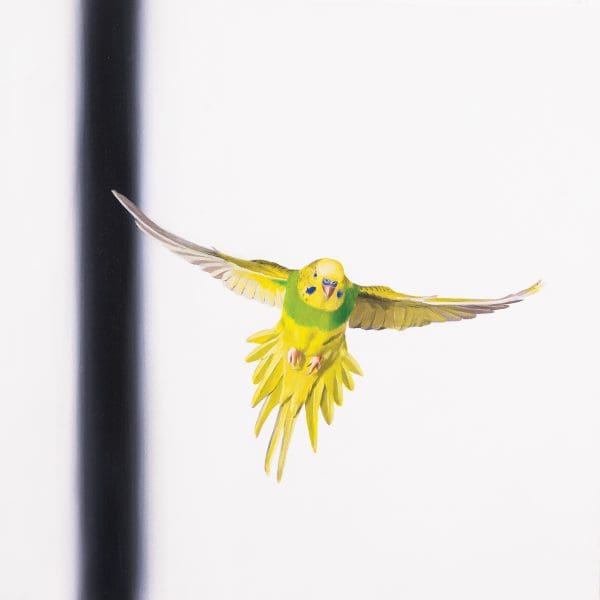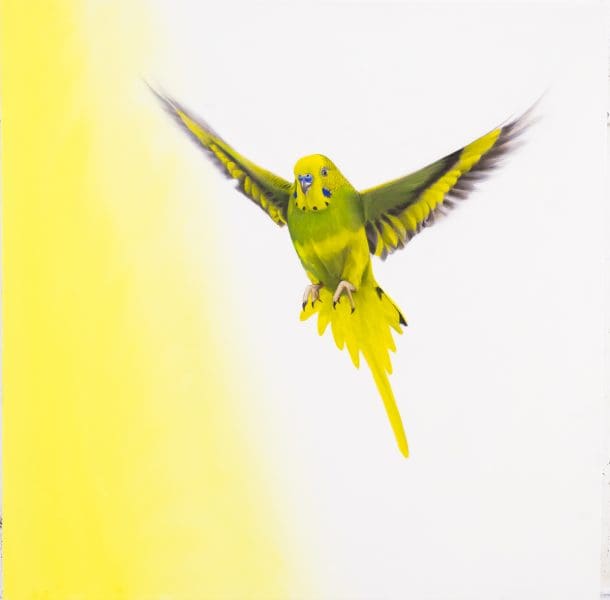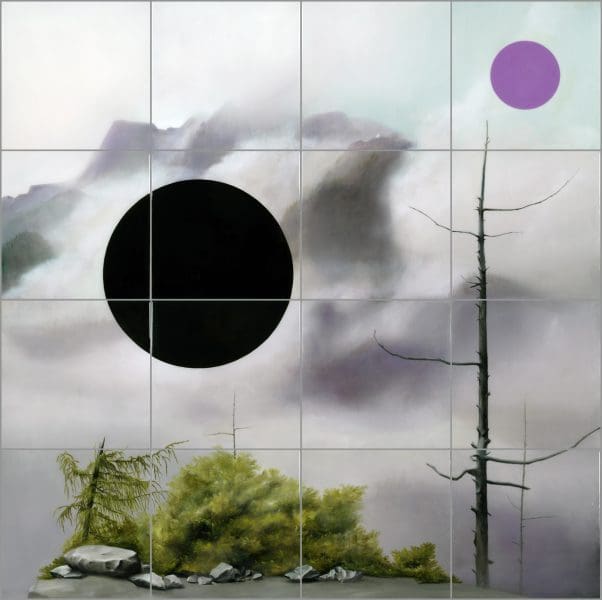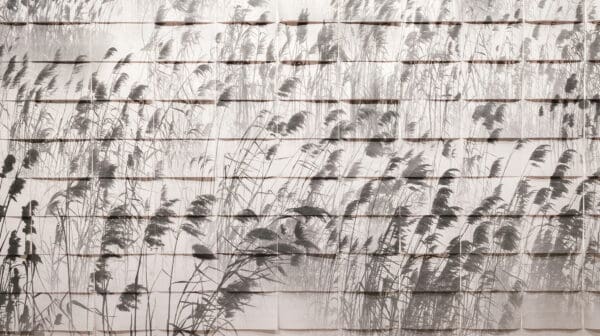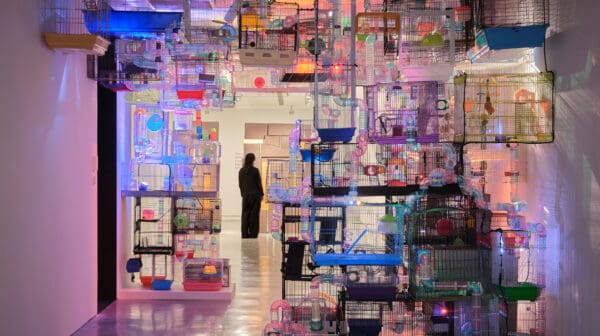Contemporary art is made richer and at times, more perplexing by the way that it subsumes other disciplines. New materialism, which rewords assumptions about the nature of the universe, is a case in point. This complex bundle of theories posits that agency exists in inanimate objects. Artists working by riffing on these ideas often use unembellished raw materials, such as rock and clay, as if to heighten a world without humans at its centre.
Sam Leach’s upcoming solo exhibition, Avian Interplanetary, takes these notions down a different aesthetic path. A future habitat that is ‘non-human’ in focus will be dominated by a vinyl moon floorscape
and populated with op art-inspired paintings, landscape and hyperreal birds and objects.
The prime influence for the exhibition, however,
is the neuroscientist Mandyam Srinivasan, who investigates how bees and budgerigars navigate their way through space and applies these findings to robotics. This research privileges the non-human over the human in a similar vein to new materialism. In addition, Srinivasan’s studio is a strong visual influence.
“What I really got excited about when I visited him,” says Leach, “was [that] his lab looks like a giant op art exhibition – there are striped sculptures, large-scale colour fields printed with polka dots, and corridors
lined with visual patterns. And to me it’s similar to the research of op art itself, the way that [Bridge] Riley and [Victor] Vasarely made works that used patterns and abstract shapes to test and exploit quirks of human visual cognition. However in Srinivasan’s lab it is aimed at the non-human.”
This style comes through in Leach’s paintings where subjects are backdropped with tonal graduations, and in the strong lines of colour which flank realist renderings of birds.
In order to remove the human, he endeavours to avoid evidence of brushstroke. “I go to a lot of effort to keep the surfaces of my works smooth, just as I make an effort to keep my personal emotions out of it, to a certain extent,” he says. In the past he has heightened this effect by applying a resin finish, which will be replaced by glass in his upcoming show.
Landscape as a genre has been an ongoing preoccupation for Leach, “I’ve always been interested in the idea of the constructed landscape. An earlier strand of my research focused especially on Dutch Italianate landscape and the way that those paintings were put together in the studio to form an idealised view of Italy.” A central landscape painting in this exhibition is depicted through the lens of drone footage, whose vision system is based on the budgerigars. It provides an aerial view of soft green paddocks painted in oil twists with distortion. “It’s slightly nauseating, as you should expect it to be if you approach something from a non-human view. It should have a sense of disorientation to some extent,” he says.
Other influences include science fiction and early 20th-century Russian cosmism, which lends Leach’s work a space exploration vibe. A stainless steel object that looks as if it may have fallen off a spacecraft is a ‘Mexican hat mirror’ that drones use to process vision, catching multiple viewpoints simultaneously. A fabrication of this will sit on the moonscape floor, and will also feature in paintings. Leach explains, “this show is looking at some of Srinivasan’s experiments, thinking about the teleological view of science and whether there might be an ultimate goal of this kind of pure research. I think that it has something to do with space exploration, immortality and other world habitats. It’s like Russian cosmism, and the very work they did on rocketry and space travel as part of their quest for immortality. If humans were immortal, what could their future environment look like?”
Avian Interplanetary
Sam Leach
Linden New Art
27 May – 6 August
